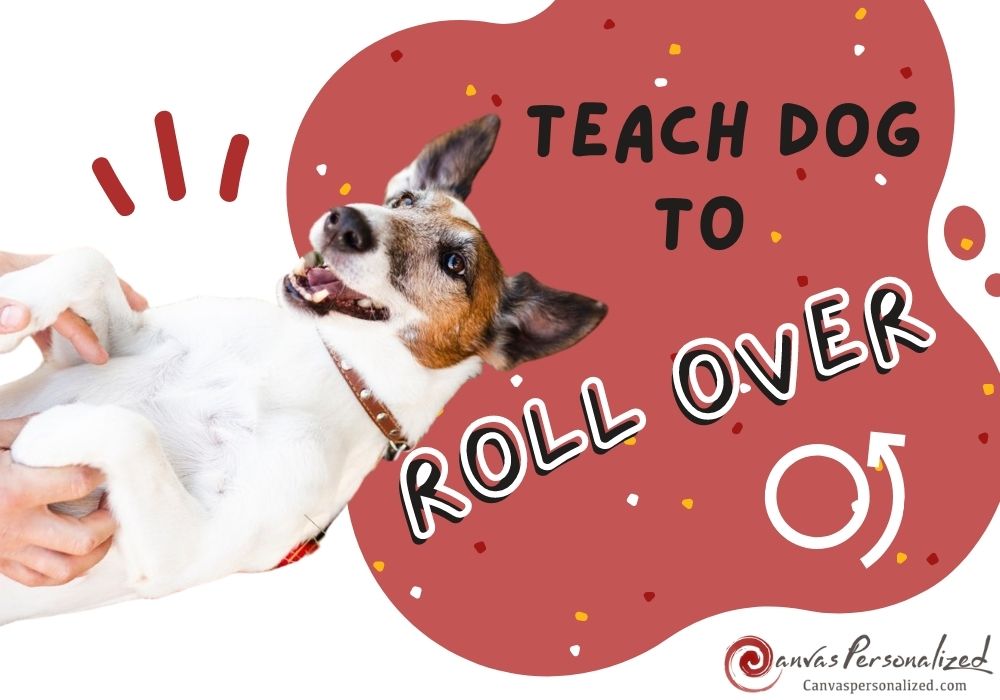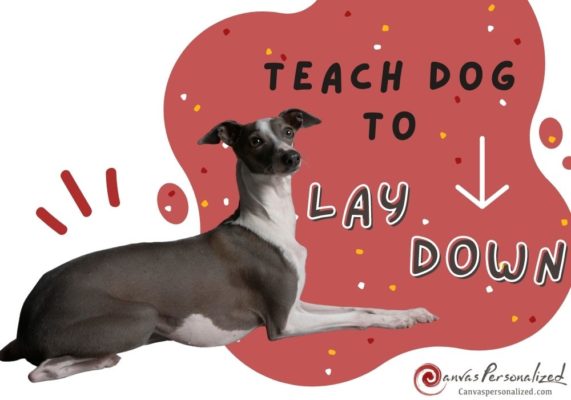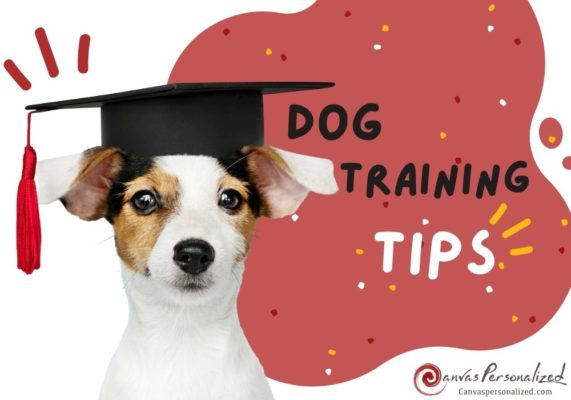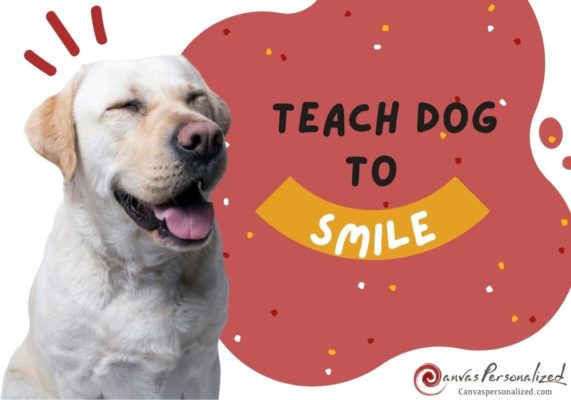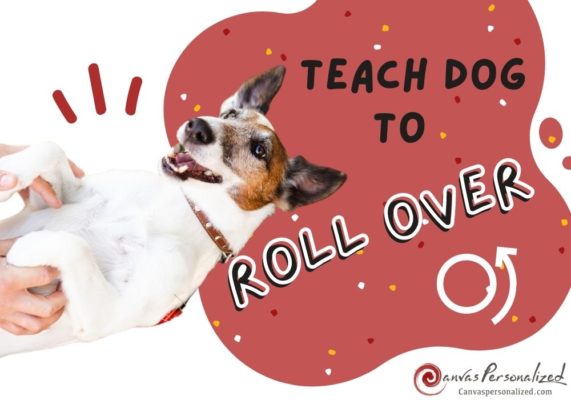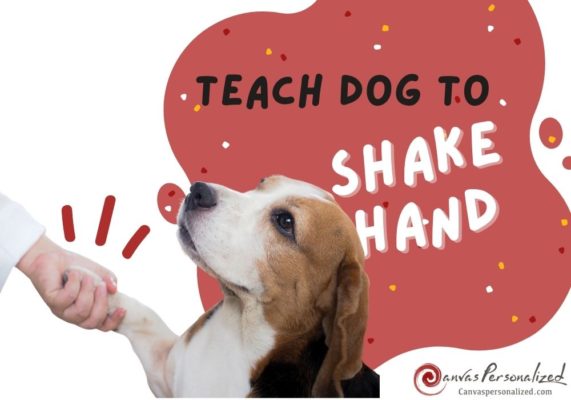Ever watch another dog playfully roll over and wish your furry friend could do the same? Not only is this trick adorable, but it strengthens your bond and provides mental stimulation. This step-by-step guide will walk you through how to teach a dog to roll over, making the process enjoyable for both you and your pup. Get ready to be amazed by your pup’s newfound talent with Canvas Personalized!
When Can You Teach Your Dog to Roll Over?
Training your new pet to perform tricks can start right when you bring them home. Generally, younger dogs are more receptive to learning new tricks. It is advisable to begin training classes for puppies when they are between 12 and 16 weeks old, once they have completed their vaccinations. This “sweet spot” capitalizes on their natural eagerness to please and high responsiveness. Don’t worry if you have an older dog – patience and the right methods can make training them a breeze!
Just make sure that your canine knows how to sit and lie down on command before you teach them to roll over.

1. How To Teach A Dog To Roll Over On Command
What You’ll Need
- A calm area devoid of noise, food, or other people as distractions
- A rug, pet mat, or soft dog bed
- Tasty treats: These should be bite-sized and soft for easy consumption. Plus, using treats that your pets don’t typically receive can provide extra motivation.
- A clicker to use when the dog obeys the command (optional).
Training A Dog To Roll Over in 4 Simple Steps
While “rollover” is pretty easy to teach most dogs, there are a few things to consider. For safety reasons, avoid this trick with large, deep-chested breeds. Additionally, showing their bellies can make some dogs feel uneasy. To ensure a positive experience, make sure you’ve built a strong bond of trust with your furry friend.
Step 1: Begin with lying down position
Instruct your canine to lie down in front of you. Request your dog to assume a “down” position in front of you. After they do, kindly kneel down next to them and express your appreciation with a treat and a cheerful tone: “Good job!”
*Pro Tips:
Getting your dog into the lying down posture is key when training a dog to roll over. So make sure you take time, read carefully the dog training tips, or observe the video before moving on to the next part.
Step 2: Move to their side

While your dog’s still lying down, slowly move the treat from their nose towards their shoulder. As they follow the treat with their head, they’ll naturally start turning their body. When they roll onto their side, celebrate with a treat and excited praise (“Yes! Good job!”).
Step 3: Add verbal cue
Repeat step 1, but this time, as you move the treat, say your chosen cue word clearly (“Roll over!”). The goal is to associate the movement with the verbal command. When they roll over, excitedly praise them and give them the treat, emphasizing the cue word.
Step 4: Gradually fade the luring
Over time, as your dog grasps the concept, start reducing the amount of movement with the treat. Instead of a large arc, aim for a shorter movement towards their shoulder. Reward them only when they roll over with the verbal cue and minimal hand movement.
By now, you should feel confident enough to practice in real-life situations, even with other people and potential distractions. If you notice them having a hard time, offering them some treats every now and then is perfectly fine.
2. Tricks to Teach Your Dog to Roll Over Successfully
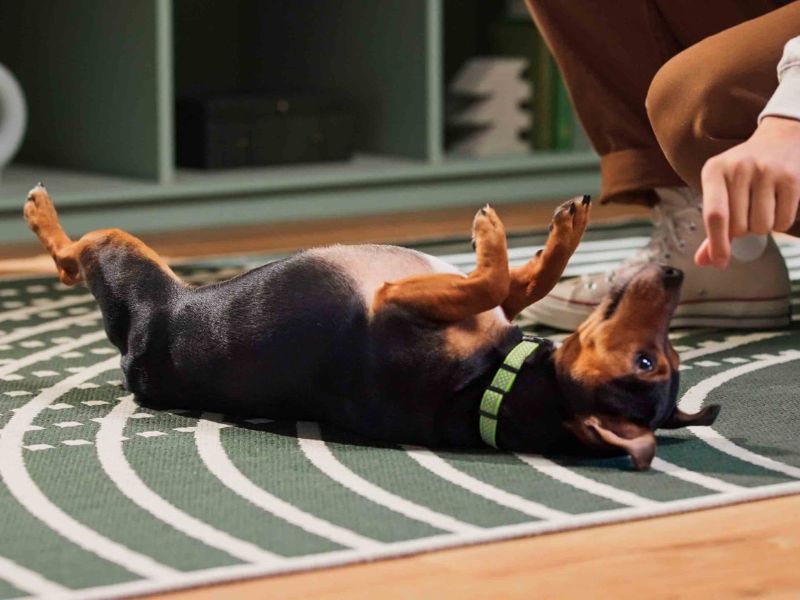
When training a puppy to roll over, pay attention to these things below to make a great training process:
Keep training sessions short.
It is recommended to practice for short durations, ideally no more than 3–4 minutes, once or twice daily. Be mindful of not overexerting when training a dog to roll over. When they’re young, their attention span can be quite short. To maximize the effectiveness of their training, it may be beneficial to practice for just a few minutes each day.
Cater to your dog
Identifying your dog’s learning style would help the training progress go more smoothly. Is your dog more visual, auditory, or kinesthetic?
- Visual learners respond well to hand signals.
- Auditory learners thrive on clear verbal cues.
- Kinesthetic learners benefit from gentle physical guidance.
Once you know your canine learning style, adjust your training approach accordingly.
It’s also recommended that you should respect their comfort level. Some dogs might feel uneasy showing their bellies. If your dog seems hesitant, don’t force it. Build trust and gradually lure them into the movement.

Keep it positive
Shower your dog with enthusiastic praise (like “Good rollover!”) and a delicious treat every time they successfully complete the trick. Also, maintain a happy and encouraging tone throughout the training session.
If you’re using a clicker, click just as your dog begins to roll over, then immediately give them a treat. This precise timing reinforces the desired behavior.
Consult a vet first
It is important to consider the well-being of dogs before teaching them tricks. If a dog has any health issues, it is advisable to consult with a veterinarian to ensure that training will not cause them any discomfort or pain.
>>Further reading:
- How To Teach Dog To Play Dead On Command In 5 Easy Steps
- How To Teach A Dog To Come When Called In 4 Foolproof Steps
- 5 Simple Steps To Teach Your Dog To Lie Down For Beginners
- How To Teach A Dog Its Name In 4 Foolproof Steps-New Tricks
So, are you ready to teach a dog to roll over? With our guide, patience, and positive reinforcement, you’ll be a dog training expert in no time! Remember, short, fun sessions are key to keeping your pup engaged. Soon, you’ll be enjoying your dog’s impressive new skill and the strengthened bond that comes with successful training. Don’t forget to share your pup’s “rollover” success story with Canvas Personalized in the comments!


